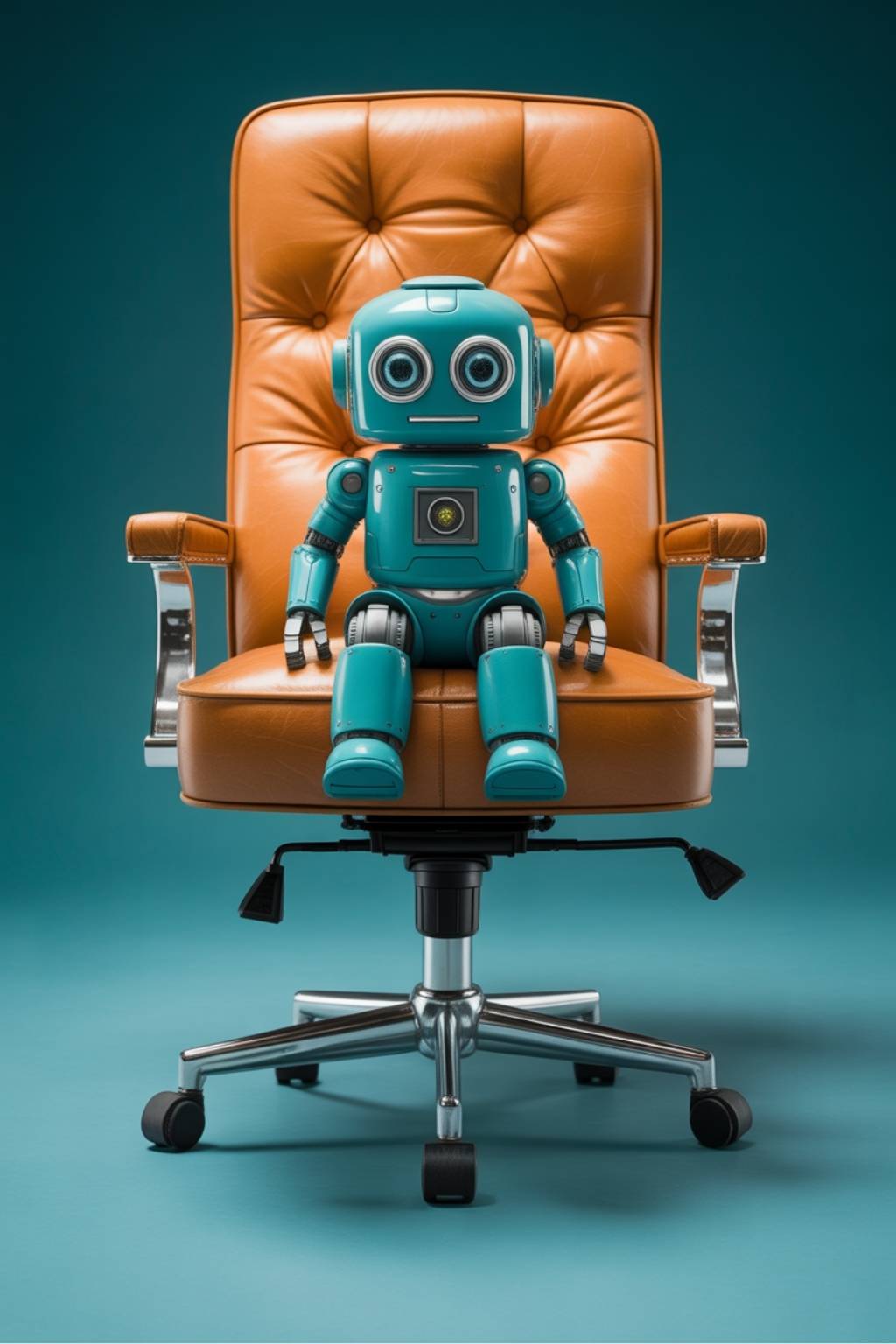Your Next Direct Report is an AI
We are now squarely in the Agentic Era: a move beyond AI answering your questions toward AI executing a plan across systems, autonomously or semi-autonomously. While generative AI is still a focus, leading companies have shifted their sights to building out an AI workforce to complement their human employees.
It’s important to understand the distinction between the tools of today and the systems of the future. Many of today's agents are powerful automations, supercharged with AI to help them understand unstructured data, interpret natural language, and make more nuanced decisions. True “agentic AI” systems, however, are defined by their proactivity and autonomy; they anticipate needs, interpret context, and take independent action toward a goal. While we’re not fully there yet, that future is on the horizon, so getting reps in with today's agents is the critical first step.
What does this look like? It means you will soon be on a Zoom call with an AI agent that gets tasked with action items just like everyone else. Just yesterday I was on a client call, and asked Firefly.ai to read back the action items from the call and it did it flawlessly. And in the future, that agent on the call will actually look and sound like another human colleague, only it won’t be.
Adapt or Be Automated: The New Competitive Reality
The buzz in the industry inevitably surrounds the question: will these agents take our jobs? The short answer is maybe. Some tasks, especially those our junior or mid-level employees are doing today, will be automated. But this will also free up your team for higher-value strategic work and create entirely new categories of AI-centered roles. For those who are smart and move fast, the opportunity is not just to keep your job, but to become a manager of a hybrid human-digital team and 10x your impact (no, 10x isn't hyperbole).
This shift creates a stark competitive landscape. For our startup clients using tools like n8n, Make or Lindy, we’re architecting entire marketing functions out of agents or swarms of agents, giving them the firepower of a full-scale team without the corresponding headcount. They can now out-maneuver larger, established brands that don't adapt.
But what if you work for a large enterprise where you can't just onboard new tools going through the arduous IT review process? That’s where enterprise-grade platforms from Microsoft, Salesforce, and Adobe come in. The alternative is to partner with your IT department to build a custom agent workforce on a platform you already trust, like AWS or Google Cloud. Not to get too technical, with MCP (Model Context Protocol) and A2A (Agent-2-Agent), it's never been easier for IT to connect agents to other agents and systems.
The imperative is the same for everyone. So, where do you start? The journey begins not with a moonshot project, but in the engine room of your business.
The Grinding Gears of Internal Operations
The biggest threat to your agility isn't always a competitor; it’s often the quiet drag of your own internal processes. In a business landscape that demands speed, many organizations are anchored by operational friction—fragmented systems and constant context-switching where employees spend too much time on "work about work."
The numbers are stark. According to a recent study by Pega, a stunning 68% of teams report that old, legacy systems actively prevent them from working effectively, while separate industry analysis shows IT departments can devote about 30% of their time to basic support chores. This problem manifests as frustrated teams and delayed projects. It's the marketing team manually pulling performance data from six platforms for a weekly report, the social media manager drowning in routine comment moderation, or the content team stuck in an endless loop of repurposing the same assets by hand.
The AI Flywheel Framework
To address this operational drag, a strategic framework can turn internal friction into forward momentum. By fundamentally redesigning how work gets done around AI capabilities, you can achieve a new level of operational efficiency.
Here’s how it works:
- Audit and Identify. Start with a strategic audit to find the points of greatest friction. The goal is to identify highly repetitive, low-value tasks that consume human time, like generating routine performance reports or reviewing lead inboxes.
- Map the Workflow. Before an agent can succeed, the process must be mapped in granular detail. This map pinpoints exactly where data needs to be accessed and from which systems. This is often the most time-consuming step, but it is the most critical.
- Build the AI Specialists. With the map in hand, you build your agents. Think of them as new specialist hires. Some are workhorse agents for high-volume tasks. Others are internal co-pilots that assist employees with drafting documents or finding information.
- Launch and Socialize. A rollout should be a phased beta with a small group of employees. A critical, often-missed step is socialization. Giving the agent a name, introducing it to the team, and clearly defining its role is key to change management.
- Test, Implement, and Expand. After launch, shift to a continuous loop of improvement by tracking metrics and gathering feedback. Once an agent proves its value, expand its duties and move on to the next use case.
And some pro tips to help along the way:
- Govern from Day One. The autonomy of AI agents introduces new risks. Robust governance frameworks, including human oversight, must be implemented from the outset.
- Focus on Redesign, Not Repaving. The most significant business impact comes from fundamentally redesigning workflows to leverage AI, not just layering automation onto broken methods.
- Prioritize Data Readiness. AI agents are heavily reliant on high-quality, accessible data. "Garbage in, garbage out" is the rule.
The "AI skill gap" is real, but it also creates a massive opportunity for savvy individuals. Becoming an expert in designing and managing these human-agent workflows is one of the fastest paths to making yourself indispensable.
The Victory: A Day in the Life of an Empowered Marketing Team
Imagine this framework in action. Before, a marketing team launching a new campaign was mired in a scramble of manual work.
With the AI Flywheel, the experience is transformed. A "Reporter" agent works overnight to pull data from Google Analytics, social platforms, and ad networks into a single dashboard. After the team develops a core concept, a "Copywriter" agent generates a hundred variations of ad copy. Finally, a "Campaign Manager" agent takes those assets and uploads them to each advertising platform.
The results are dramatic. The human team, now a strategic hub, is freed from the manual grind to focus on deep analysis and high-level creative strategy. The time to launch and iterate on campaigns is cut by 75%. This is how, as Gartner analysis suggests, companies using AI in sales and marketing can see revenue increase by as much as 30%.
Companies Doing It Well
While our example focused on marketing, this principle of agent-led automation drives value across all business functions.
Siemens: The industrial giant deployed an AI-driven predictive maintenance system. The company reported that by having agents analyze sensor data, it cut plant power outages by 25% and now saves millions of dollars annually.
IBM: Based on interviews with its CEO, the tech leader automated several HR functions to handle tasks like employment verification. This freed the human HR team to focus on more strategic initiatives.
Moveworks (for Amadeus): In a case study published by Moveworks, the travel technology company Amadeus deployed an AI assistant for internal IT support. The results showed it reduced calls to the IT support desk by 44% and saved an incredible 60,000 employee work hours per month.
The Bottom Line
- Fix the Engine First. Your internal operational drag is a primary limiter on your team's potential. Fixing it is the only way to pick up speed.
- Automate Tasks, Not People. The goal of AI agents is to automate tedious work to free up your talented people for the complex, creative, and strategic thinking that drives real value.
- Redesign for True Transformation. The biggest returns come from fundamentally redesigning your workflows around AI's unique capabilities, not just layering automation onto old methods.
Like what you read? Want to learn more? Reach out to: eliot@agntcy.ai
Sign up for our newsletter.
The AI Model.
Get strategic and practical AI insights delivered to your inbox.











